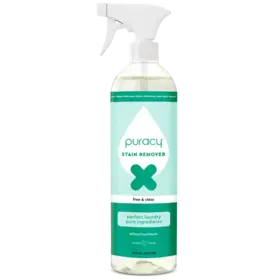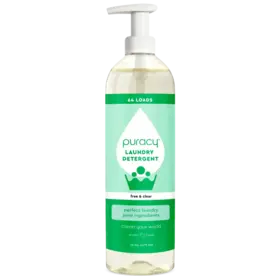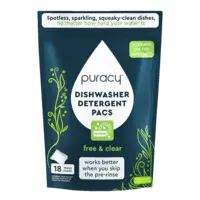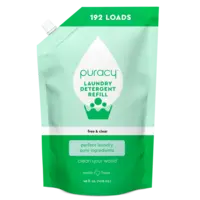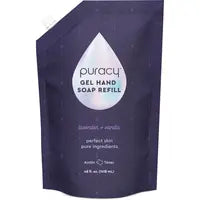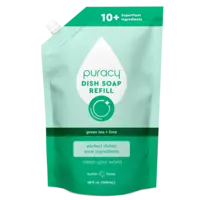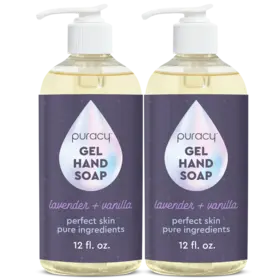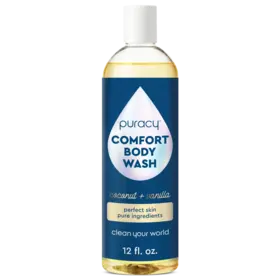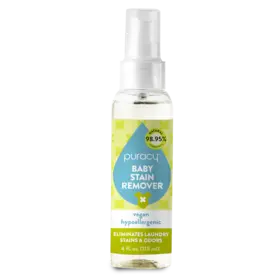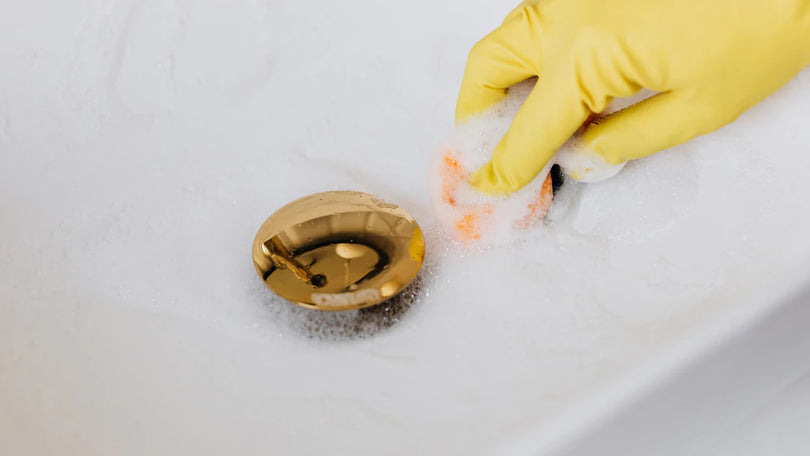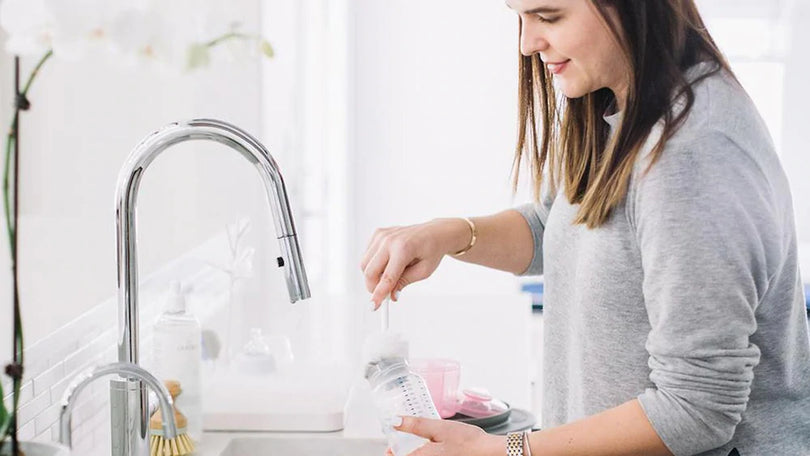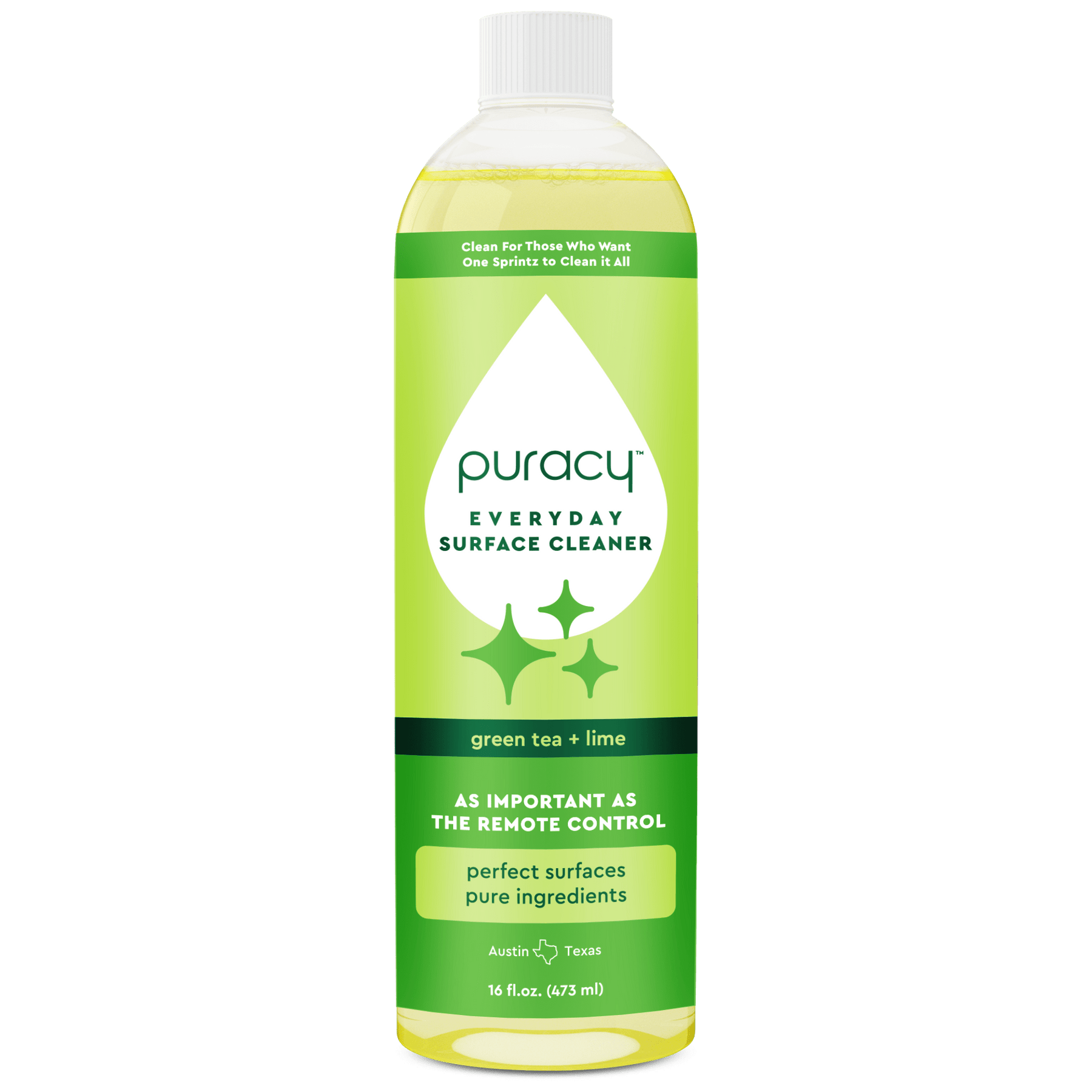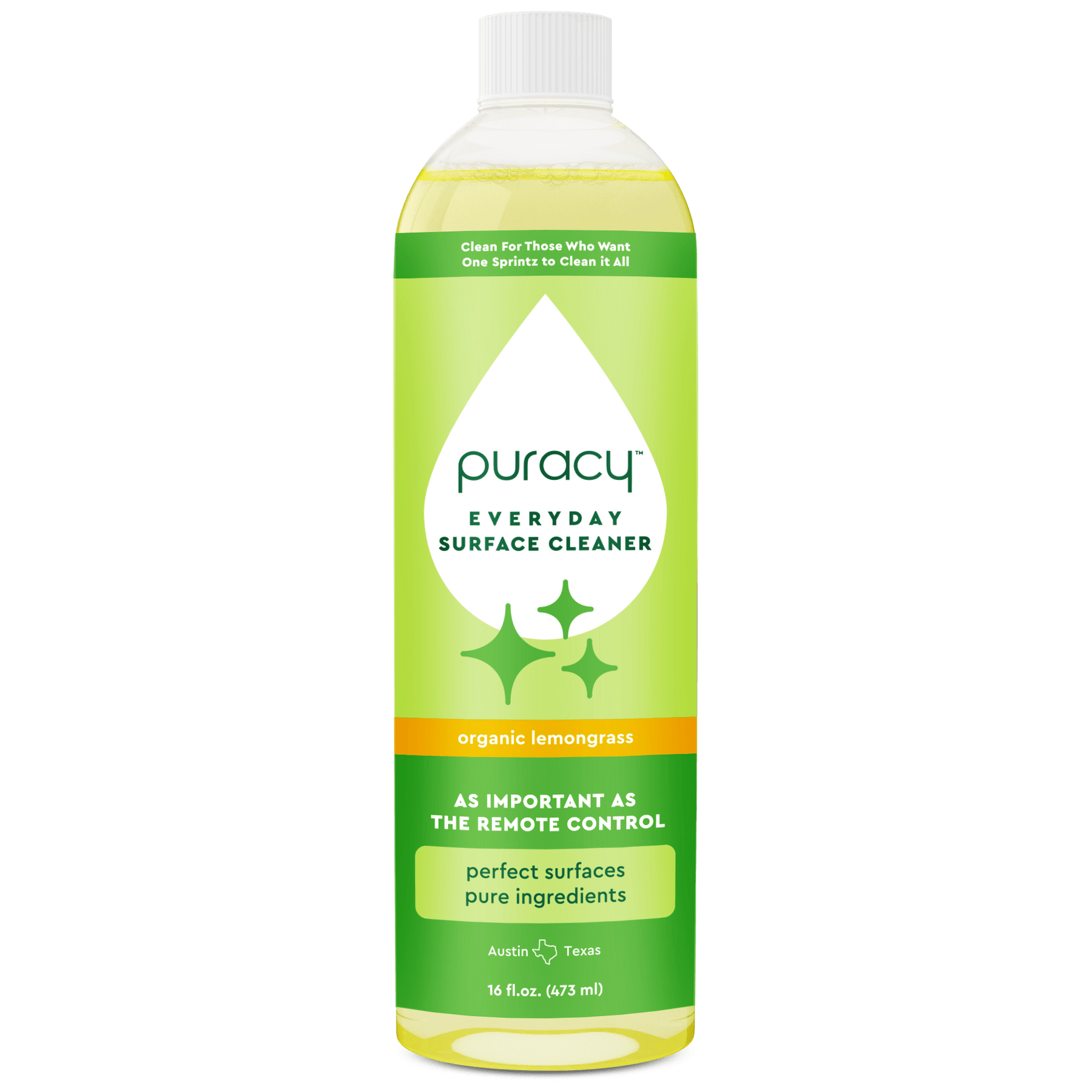Before the big game, you may be wondering the best way to clean your TV screen, especially those stubborn streaks and smudges. A nice television is the focal point of many a living room or rec room. It's where the kids watch their favorite shows to unwind after school, where you catch up on the day's news after dinner, and where you all cheer on the home team if you don't have tickets for the game.
You searched long and hard for the right TV to fit your family’s needs, and your investment likely cost you some serious coin. However, as advanced as modern television screens are, they’re also a bit fragile -- so why risk ruining yours by cleaning it the wrong way?
What Should I NOT Use to Clean My TV Screen?

Sony, Samsung, LG, Vizio, Toshiba, Panasonic... no matter which brand your television is, you should first refer to the owner’s manual that came with it. If the manufacturer’s cleaning instructions specifically say not to use ANY type of liquid on the screen, then you’ll want to follow their advice. This is especially true if your warranty is still in effect because doing so could void your warranty.
Ammonia or Acetone

Most television screens can be cleaned with just a clean, dry microfiber cloth, advises Sean Busch, Puracy’s co-founder and resident cleaning expert. If your screen is extra dirty and needs a little help from a liquid cleaner (and your owner’s manual doesn’t advise against it), you’ll want to choose a product like Puracy Natural Multi-Surface Cleaner that doesn’t contain ammonia or acetone. Sean says those chemicals can scratch the screen or peel away the delicate coating on the surface.
Untested DIY Home Remedies

Sean also advises against home remedies like vinegar, rubbing alcohol, or baby wipes for the same reason (baby wipes can also leave residue, fibers, and streaks behind when cleaning). Again, refer to the owner’s manual to see which ingredients and products should work best for your TV model.
Is It Okay to Use Windex to Clean My Television?

Windex and many other window cleaners on the market contain ammonia. According to the Environmental Protection Agency (EPA), “ammonia can be a hazard to human health.” Ammonia and other harsh chemicals can also eventually "eat away" at a modern TV screen's coating. For this reason, it's not okay to use Windex to clean your television, unless you have an older-style CRT TV. (And even then, make sure you spray the cloth, not the screen.)
None of our products here at Puracy contain ammonia, and they never will. Instead, Puracy Natural Multi-Surface Cleaner is formulated with plant-based ingredients that are effective on grease and grime without the need for harmful chemicals. It’s also safe to use on any type of television screen, so we recommend using it instead of Windex.
Should I Buy a Specialty TV Screen Cleaner?

Save your money, Sean says. Most specialty TV cleaners are expensive, and most television screens can be cleaned with just a clean, dry microfiber cloth. If you do need help from a liquid cleaner, read the label to make sure it doesn’t contain ammonia or acetone. Just one small spray on a microfiber cloth of a plant-based formula like Puracy Natural Multi-Surface Cleaner will do the trick.
The Best Way to Clean a TV Screen in Just a Few Easy Steps

Here are Sean’s step-by-step directions for cleaning your TV screen, with or without the help of a cleaner. These instructions are identical for any type of TV screen, ranging from old-style CRT screens to newer varieties like LCD, LED, plasma, and OLED screens.
Important: If your TV screen is not mounted on the wall, keep it from tipping by holding it securely with one hand while cleaning with the other.
1. Turn off the television or, ideally, turn it off AND unplug it.

If it’s not mounted to the wall, or if it’s on a mount that can swivel, then turn it towards a light source, such as a window. This way, you’ll be able to see the fingerprints and other smudges clearly. (You know that screen glare that interferes with the action on the screen when you’re trying to watch a movie? When it comes to cleaning your TV screen, that glare actually comes in handy.)
2. With a clean, dry, folded microfiber cloth, wipe the screen.

Start at the top and use tight, overlapping “Z” strokes all the way to the bottom. Don’t press too hard; as noted above, TV screens are fragile.
3. View the screen at different angles to make sure there are no remaining streaks or smudges.

If the screen is completely smudge-free, you’re done with the screen. See below for tips on cleaning the back of the TV and the remote.
How Do I Tackle Stubborn Fingerprints, Streaks, or Other Marks?

If smudges and stains remain visible on the screen, follow the remaining steps to ensure the best viewing experience on your TV screen.
4. Spray a clean, folded microfiber cloth with Puracy Natural Multi-Surface Cleaner.

If you don’t have any on hand, you can use one spray of water. Wipe the TV screen with the cloth, starting at the top and using tight, overlapping “Z” strokes all the way to the bottom.
Sean’s tip: “Do you notice streaks on your screen after cleaning? It’s possible that you used too much solution, or your microfiber towel could be dirty. Grab a clean, dry microfiber cloth and try again.
“If using water, make sure you use filtered or distilled water to avoid depositing mineral residue onto the screen, especially if you live in an area where the water is considered to be hard. Not sure if your water is hard? Check out our article How to Remove Hard Water Stains Quickly & Easily; you’ll find a map of hard-water areas across the country, plus special cleaning-day suggestions for fixtures and surfaces marred by unsightly hard-water stains.”
5. Turn the folded microfiber cloth to the dry side and make another pass.

Again, start at the top and use tight, overlapping “Z” strokes. This step will buff away any lint or residues remaining on the screen. Avoid large circular buffing motions, since this can just leave smudges on the screen's surface.
6. View the screen at different angles to make sure there are no remaining streaks or smudges.

If any spots remain, repeat step 5. Lastly, to avoid electrical damage or electrical shocks, make sure the screen is completely dry before turning your television back on.
Don’t Forget to Clean the Back of Your TV (and the Remote)

Cleaning the back of the television is simple. Just dust it with a clean, dry microfiber cloth, paying special attention to any vents that may be clogged with dust. If necessary, spray your microfiber towel with one spray of water.
It’s important to clean the remote, too. Think about it: How many dirty, popcorn-greased hands touch it during your last family movie night? Follow these easy steps:
1. Remove the batteries.

Similar to cleaning your TV, always make sure electronics are completely powered off before beginning to clean them.
2. Hold the remote over a trash can.

Turn it over so the buttons are facing down. Tap the remote against your hand; this will help dislodge any crumbs, dust, or other debris hanging out between the buttons, and they’ll fall right into the garbage. Any crumbs or crud still remaining can be carefully pried out with a wooden toothpick. You can also use a cotton swab dampened with water.
3. Spray a clean microfiber cloth with Puracy Natural Multi-Surface Cleaner.

Wipe the entire remote with the cloth, and then take a separate dry microfiber cloth to dry the device. Once the remote is completely dry, you can reinstall the batteries.
How To Clean Speakers

You can't throw a memorable viewing party without impeccable sound, so don't forget to clean your TV speakers regularly, too!
For fabric-covered speakers

Consult the product instructions to see if the covers are removable. If they can't be removed, gently go over the covers with a lint roller or handheld vacuum. If the covers are indeed removable, take a vacuum to both sides and focus on any accumulated dust or lint.
For plastic-covered speakers

Again, your microfiber cloth comes in handy! Take a very lightly damp cloth and wipe the surface, and then follow that up with a dry cloth.
How To Clean Television Wires and Cables

Admit it: is there a tangle of HDMI wires and cables behind your TV, computer, or video game set up? Don't worry, here are a few tips to keep them organized and clean in time for your next gathering.
Disconnect and Clean

A great amount of dust usually collects among these wires, so first, disconnect everything to ensure you can safely clean the area. From there, run a vacuum over any carpeted areas and a dry microfiber cloth on the wires and cables.
Organize the Cables

If you don't have time to buy slim or tangle-free cables, you can find natural cotton sleeves to keep them neat and together. Make sure all the correct wires are paired together with these sleeves to prevent tangling. Also, clearly labeling different wires and their purposes (and which port they go into) can also save you time and headaches!
Minimize the Clutter

If you're confused about which wires go where, look for an AV receiver to free up unused ports and hopefully use less cables.
How Do I Clean a Computer Screen?

If you're planning to watch the big game on your laptop or computer, we've got you covered with the cleaning tips.
1.Turn your computer completely off.

Be sure to also clean your machine in a well-lighted location so you can easily spot any smudges or marks.
2. Spray a microfiber cloth with our Multi-Surface Cleaner

Again, your microfiber cloth comes in handy. (Trust us, there are so many things you can do with a microfiber cloth!) Similar to cleaning your TV, be sure to use a minimum amount of product to prevent streaking and always use a gentle microfiber cloth to prevent scratching the screen.
3. Dry the screen using a microfiber cloth

Take another pass on the screen with a dry cloth using overlapping Z strokes. Don't turn your computer back on until you've ensured that the device is completely dry.
Looking for a complete guide to cleaning your computer? Check our handy computer cleaning guide for even more tips.
Is There a Special Way to Clean a 4k or Flat-Screen TV?

4k, also called 4k UHD (ultra high-definition), is not actually a type of TV screen like those discussed above. 4k refers to the screen’s resolution --the number of individual pixels that make up the picture on the screen. LCD, LED, and OLED televisions are available in 4k (and even 8k), but CRT and plasma televisions are not.
“Flat screen” is a general term that simply refers to the shape of the screen (as opposed to a curved old-style CRT television screen), not to the specific type of screen technology.
When cleaning your TV, it doesn’t matter what type of screen technology you have. You can clean all of them using the same techniques outlined above.
How Often Should I Clean My TV?

Save yourself some time, and don't wait for sticky fingerprints or smudges to appear to clean your TV. Make it a part of your weekly cleaning routine to wipe it down with a microfiber cloth. Not only will this improve your viewing experience, but regularly keeping it clean will also help your television continue to work for years to come.
Clean Your Television Naturally with Puracy

Armed with these helpful instructions, as well as Puracy Natural Multi-Surface Cleaner and our microfiber cloth, your television will be completely clean and your remote free of germs and gunk.
While you’re preparing to watch the big game with your friends, be sure to stock up on our other home cleaning essentials, such as Natural Stain Remover and Everyday Surface Cleaner to ensure your entire home is looking its best, while also only using ingredients that are safe for your entire family. And with that, you can now return to your regularly scheduled programming.

